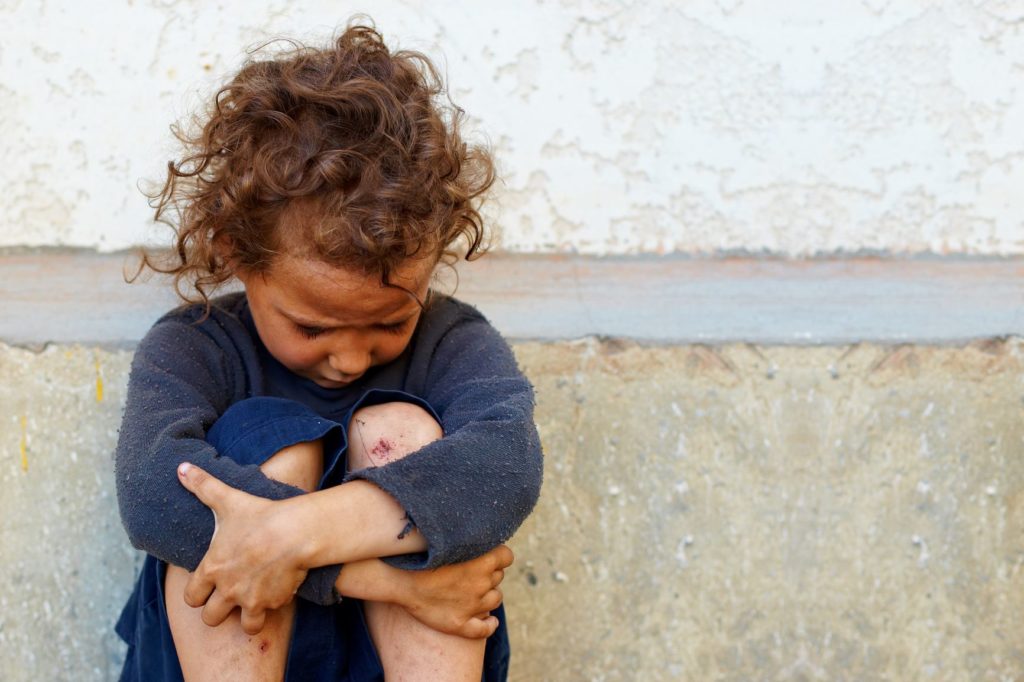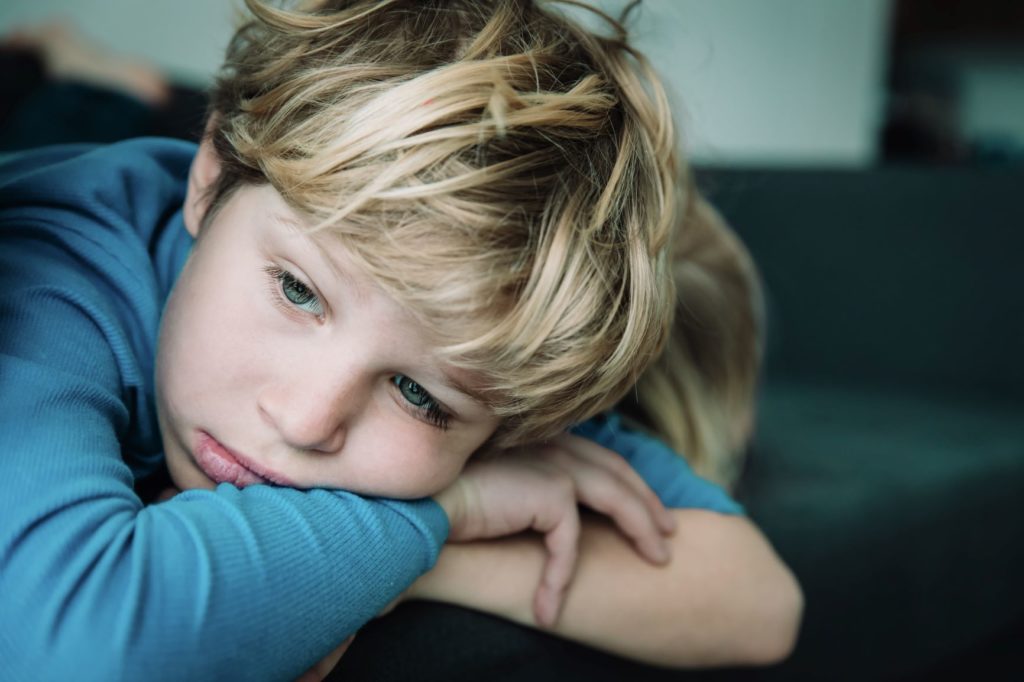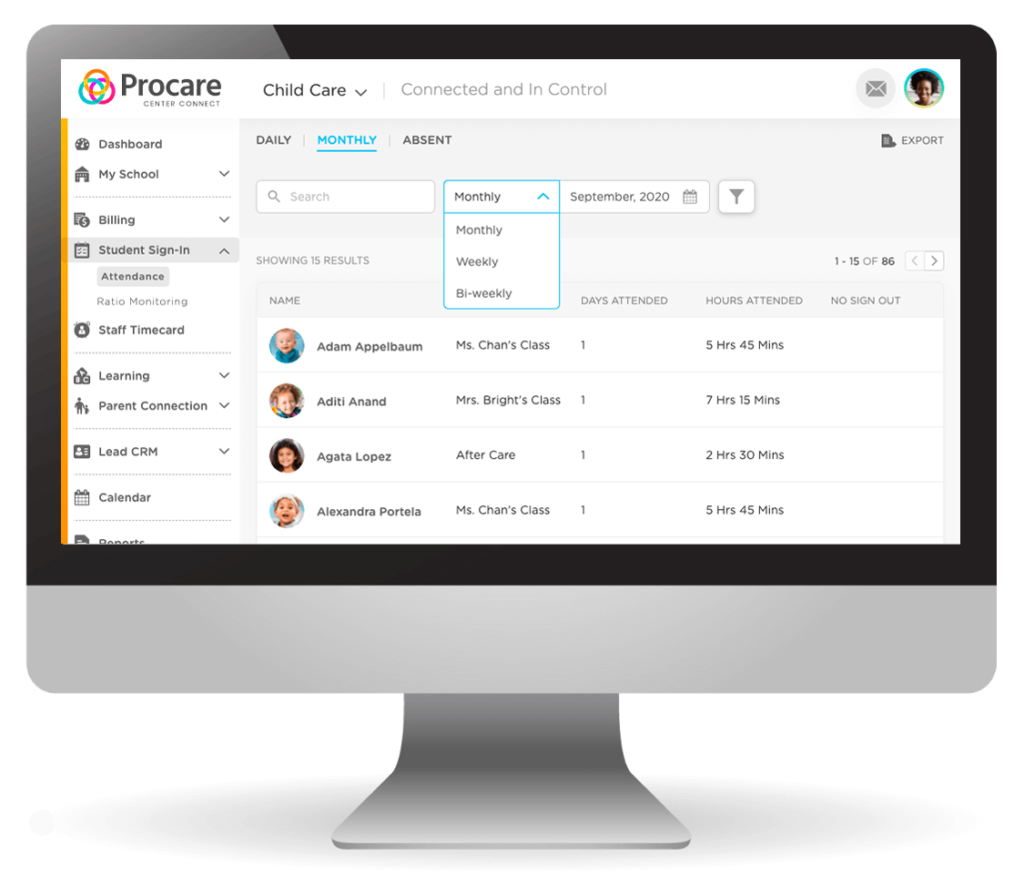
If you’re working in child care, chances are that you’ve encountered at least one child with signs of childhood trauma. In fact, the latest data shows that more than two-thirds of children have experienced at least one traumatic event before turning 16 (SAMHSA).
As a child care provider, you can help by learning to recognize the signs of childhood trauma, support kids experiencing childhood trauma and transform your child care center into a space where kids can feel nurtured and safe as they work through traumatic experiences.
Keep reading to find out how you can identify trauma in a child and what to do next.
What is Childhood Trauma?
Childhood trauma is an emotional response that may be observed in children who experience a dangerous, frightening, violent or life-threatening event. Children may experience trauma as a result of an event that happens to them, or they may experience trauma after witnessing or hearing about an event that happened to someone else. Trauma can even be triggered by violent or frightening media, such as television or movies, that the child believes are real.
Simple facts cannot always be used to determine whether a child has experienced trauma. Some experiences that could be considered scary or even life-threatening may not trigger a traumatic response in every child, as each one reacts differently to their own experiences.
The Substance Abuse and Mental Health Administration (SAMHSA) has developed a framework for understanding trauma known as the “Three E’s of Trauma.” Under this framework, trauma is characterized by an Event, an Experience and an Effect.
The Event refers to something dangerous, life-threatening or scary that happened in the child’s life. Some of the most common traumatic events have been categorized as Adverse Childhood Experiences (ACEs), which have been shown to affect long-term health, as well as future violence victimization and perpetration. Some of these events include:
- Physical, sexual or emotional abuse
- Physical or emotional neglect
- Mother treated violently
- Household substances abuse or mental illness
- Parental separation or divorce
- Incarcerated household member(s)
- Household/family member suicide
- Witnessing violence in the home or community
Traumatic events can also include national disasters, refugee or war experiences or military-related experiences like a family member being deployed overseas.
The Experience refers to a child’s subjective experience of the traumatic event. Because each child is different, adults should recognize that each child will experience traumatic events differently. An event that traumatizes one child may have little or no effect on another child.
To understand the experience, adults must focus on the individual child’s perception of the event and the feelings they experience as a result. These can include emotions like shame, fear, anger, betrayal, isolation, inadequacy and others – sometimes even in combination.
The final element of the Three E’s is the Effect. This refers to the impact of the traumatic event and the child’s emotional experience of the event on his or her wellbeing. Effects of trauma can appear immediately after a traumatic event or they may surface at a later time. They may be short-term, lasting for a couple of weeks or months, or long-term, lasting for years.
Effects of trauma can include problems in family or social relationships, changes in mood, changes in sleeping or eating habits, acting out, difficulties expressing emotion and trouble with thinking, concentrating or learning in school.
How to Identify Childhood Trauma: Signs to Watch For

When it comes to identifying childhood trauma, the first things that child care providers should be looking for are the effects. Caregivers may not be aware of traumatic events that have occurred in a child’s life, or how the child experienced those events, but it is often possible for caregivers to recognize the effects of trauma by observing a child’s behavior.
Trauma impacts each child differently, depending on both their age and individual characteristics or personality. For child care providers, it is most important to recognize the effects of trauma in young children (ages 0-5) and school-aged children (ages 6-12).
Effects of Trauma in Young Children (Ages 0-5)
- Irritability
- Tantrums
- Clinginess
- Delays reaching physical, linguistic, social or cognitive developmental milestones
- Repeating the traumatic event(s) in conversation
- Re-enacting the traumatic event(s) in dramatic play situations
- Substantially higher (or lower) activity levels than peer group
- Startling easily, with difficulty calming down or remaining calm
Effects of Trauma in School-Age Kids (Ages 6-12)
- Attention deficit/difficulty focusing in classroom or learning settings
- Being excessively quiet or withdrawn and wanting to be left alone
- Sadness or frequent crying
- Behavior regression (displaying behaviors typical of young children, such as bedwetting or fear of the dark)
- Changes in eating or sleeping habits
- Difficulty transitioning between activities
- Perpetrating violence against peers or caregivers
- Declining performance in school
- Repeatedly telling others about the traumatic event
- Hypervigilance – constantly worrying about their own safety or the safety of others
- Becoming easily startled or upset
- Experiencing guilt or shame
- Emotional numbing or distancing
- Avoiding situations or people connected to the traumatic experience
Wondering how to proceed when you see a kid experiencing these common effects of trauma? Next, we’ll review the steps you can take to support kids experiencing childhood trauma and ensure that every child feels safe and protected in your child care space.
How to Support Kids with Childhood Trauma

The most important way you can support kids with childhood trauma is by fulfilling your role as a mandatory reporter. Caregivers are required by law to report to the police any reasonable suspicion of child abuse or neglect. If you believe a child in your care is being abused or neglected at home, you should contact Child Protective Services (CPS).
With that said, many kids have traumatic experiences that don’t involve abuse or neglect – things like the death or incarceration of a family member, parents divorcing or witnessing violence in the community.
Here’s what you can do as a caregiver to help support kids experiencing childhood trauma.
- Be Emotionally and Physically Available – Kids experiencing trauma may appear overly attached to caregivers or they may appear withdrawn. These behaviors (and other effects of trauma) may cause caregivers to want to distance themselves from the child – but this isn’t the right approach. Instead, caregivers need to continue giving attention, comfort and positive engagement in whatever ways the child will accept.
- Listen – Some caregivers may feel uncomfortable discussing a traumatic event with a child, and some may even try to shut that conversation down. This is always the wrong approach. By listening to a child experiencing trauma, you can help them understand the traumatic event and deal with their emotional responses. You can help alleviate shame and guilt by reassuring the child that the traumatic event was not his or her fault.
- Don’t Take Behavior Personally – When you notice a child acting distant or withdrawn, your first instinct might be to blame yourself – are they acting that way because of you? It’s important to move past these initial feelings and recognize that traumatized kids are dealing with their emotions in the best way they know how. You can help teach the child to identify these feelings and express them in more acceptable ways.
- Be Responsive – Not Reactive – When a child is upset or acting out, don’t react by getting upset as well. Big reactions from you can make things worse when the child is already feeling upset, anxious or overwhelmed. Instead, respond by acknowledging their feelings and modeling calmness (low tone of voice, steady speech, relaxed demeanor).
- Provide Reassurance – Traumatized kids may show signs of hypervigilance, constantly worrying that something bad will happen to themselves or someone else. As a caregiver, you can play a role in reassuring the child that they are safe, that they are in your protection and that nobody is going to hurt them or make them feel afraid.
- Be Patient – Above all, it’s important to stay patient as a child care provider when caring for a traumatized child. Your support can make a big difference, but you shouldn’t expect the effects of an adverse childhood event to vanish overnight. Be consistent with praise, nurturance, attention, comforting and reassurance, both on the good days and the tough days.
Creating a Safe Space in Your Center for Traumatized Children
A safe space is an environment that allows traumatized children to move on from the past in a healthy way. As a child care provider, you can turn your center into a space that feels safe for traumatized children without compromising on the experience for the rest of your kids. And it’s easier than you think – here’s how to get started.
- Identify Trauma Triggers – A trigger is any kind of stimulus that reminds a child of their traumatic experience. Triggers can be extremely diverse, but often include things like yelling, unhealthy conflict, loud or aggressive noises, and overwhelming activities. If you have a traumatized child in your care, you may be able to identify their trauma triggers and keep them out of your classroom.
- Follow Consistent Routines – A traumatized child may have difficulty paying attention or transitioning between activities. Caregivers can make this easier by following a consistent routine that makes it easy for the child to know what will happen next. This helps to reduce anxiety and smooth the transition between activities during the day.
- Allow Some Control and Choices – A child going through trauma often experiences helplessness, a feeling that comes from their inability to control or prevent the traumatic event. To help address this, caregivers should allow for age-appropriate choices in the child care setting that help the child develop self-esteem and take control of their own life.
- Set Aside Time for Relaxation Exercises – Relaxation exercises can benefit your whole class, but they’re especially valuable for kids experiencing childhood trauma. Mindfulness, meditation, deep breathing exercises or simple quiet time can give kids the opportunity to reflect on their emotions, calm their feelings of anxiety and prepare themselves to learn and play for the rest of the day.
- Play Games & Have Fun – For younger children, distraction may be the best way to move past a traumatic experience and toward a brighter future. That’s why it’s important to keep kids playing games and having fun at your center – even while you provide the emotional and structural support they need to overcome traumatic events. Just like every child experiences trauma differently, each one will navigate the trauma at their own pace. Still, the emotional support you provide while encouraging them to socialize and have fun with other kids can help them stay engaged in the learning process as they begin to heal.
Track & Manage Every Child’s Wellbeing with Procare Solutions

Procare provides trustworthy, modern and easy-to-use child care software that can help you track and manage every child’s wellbeing, helping you document and address the impacts of childhood trauma.
Our expertise in child care has helped us craft simple solutions for tracking child attendance, documenting developmental milestones across learning domains and recording each child’s mood with digital daily reports. These tools can help child care providers recognize the effects of childhood trauma and plan strategies or interventions to help the child cope and recover.
Ready to see how Procare can support your efforts to manage childhood trauma in your center?



